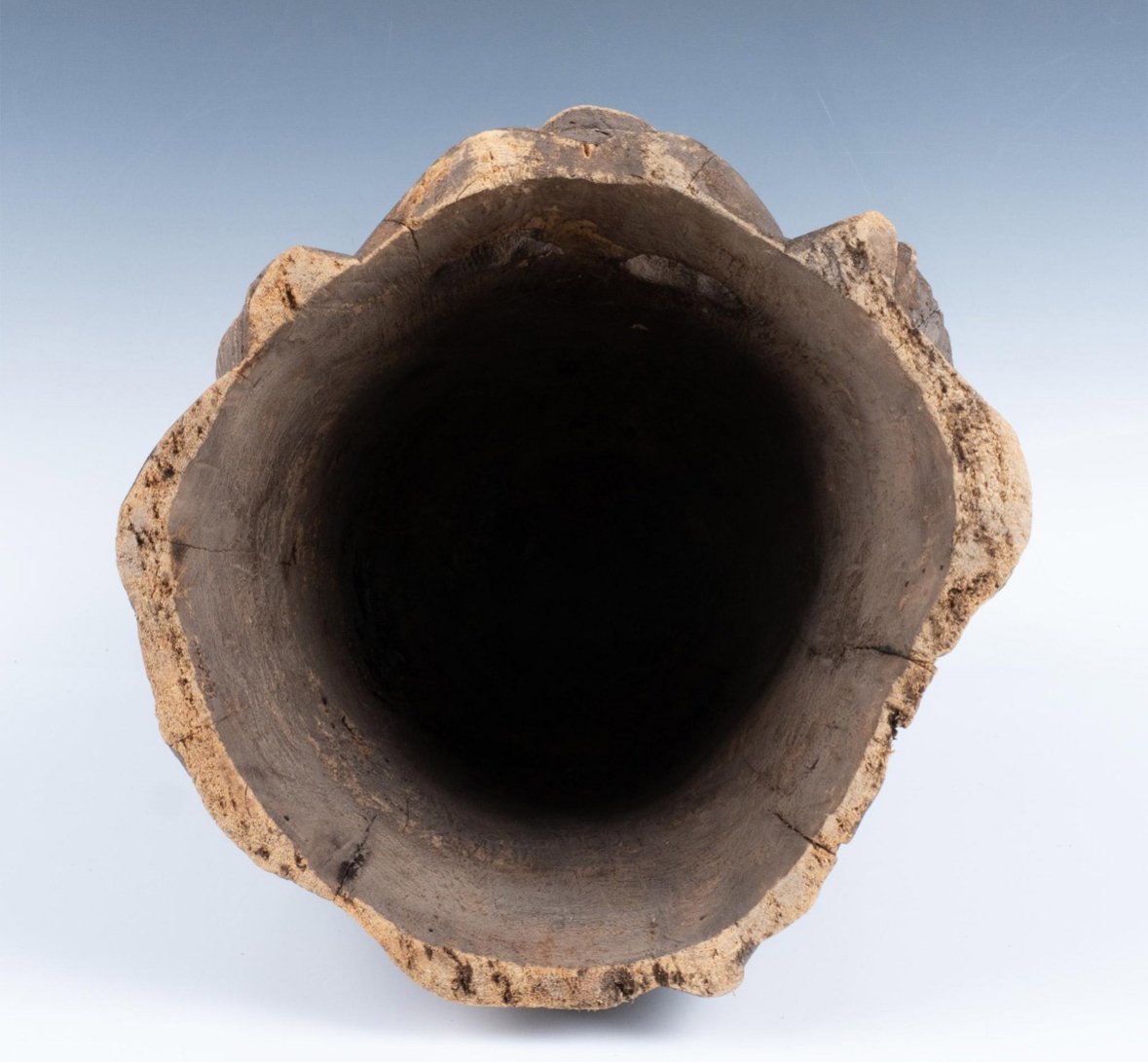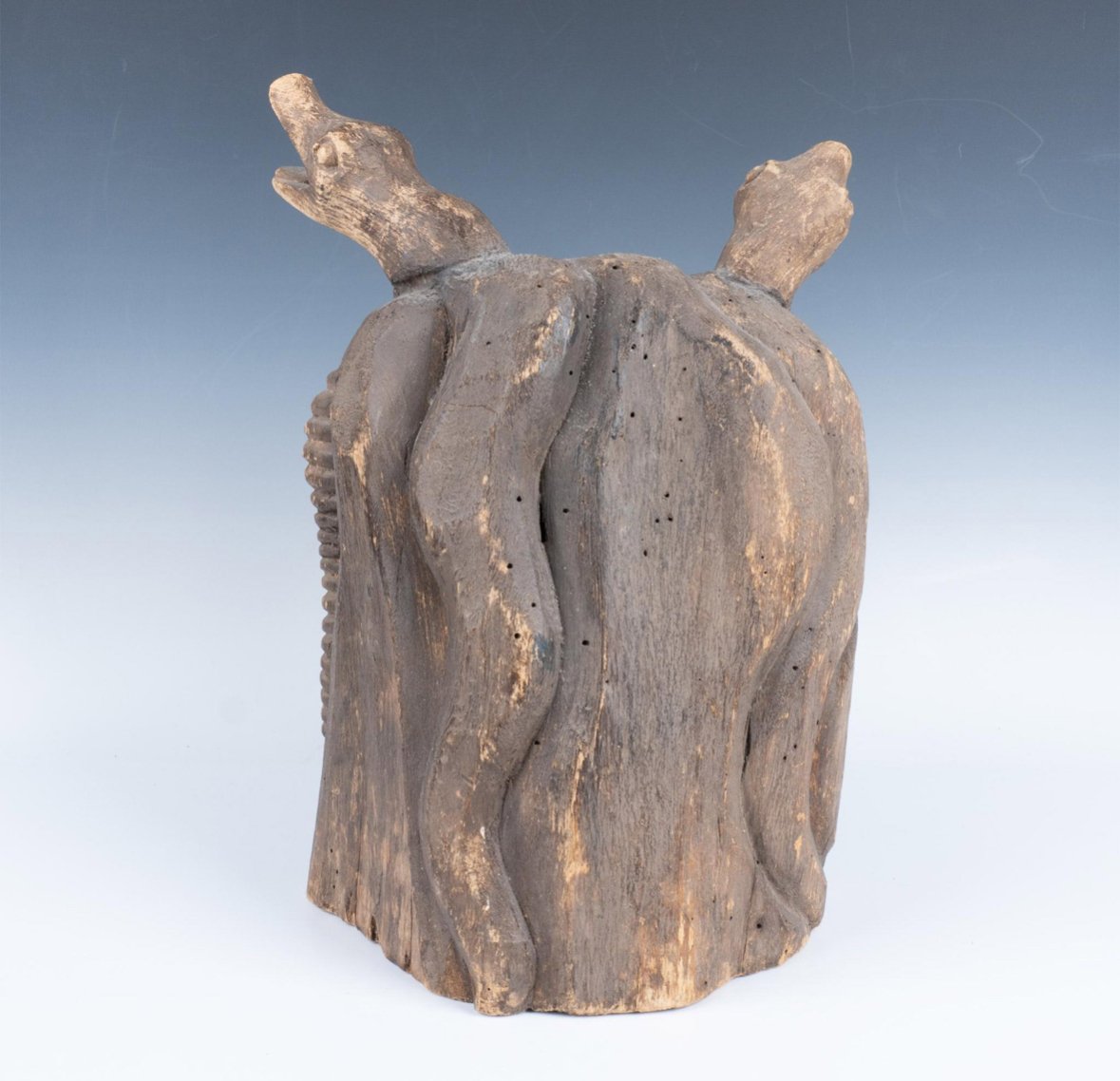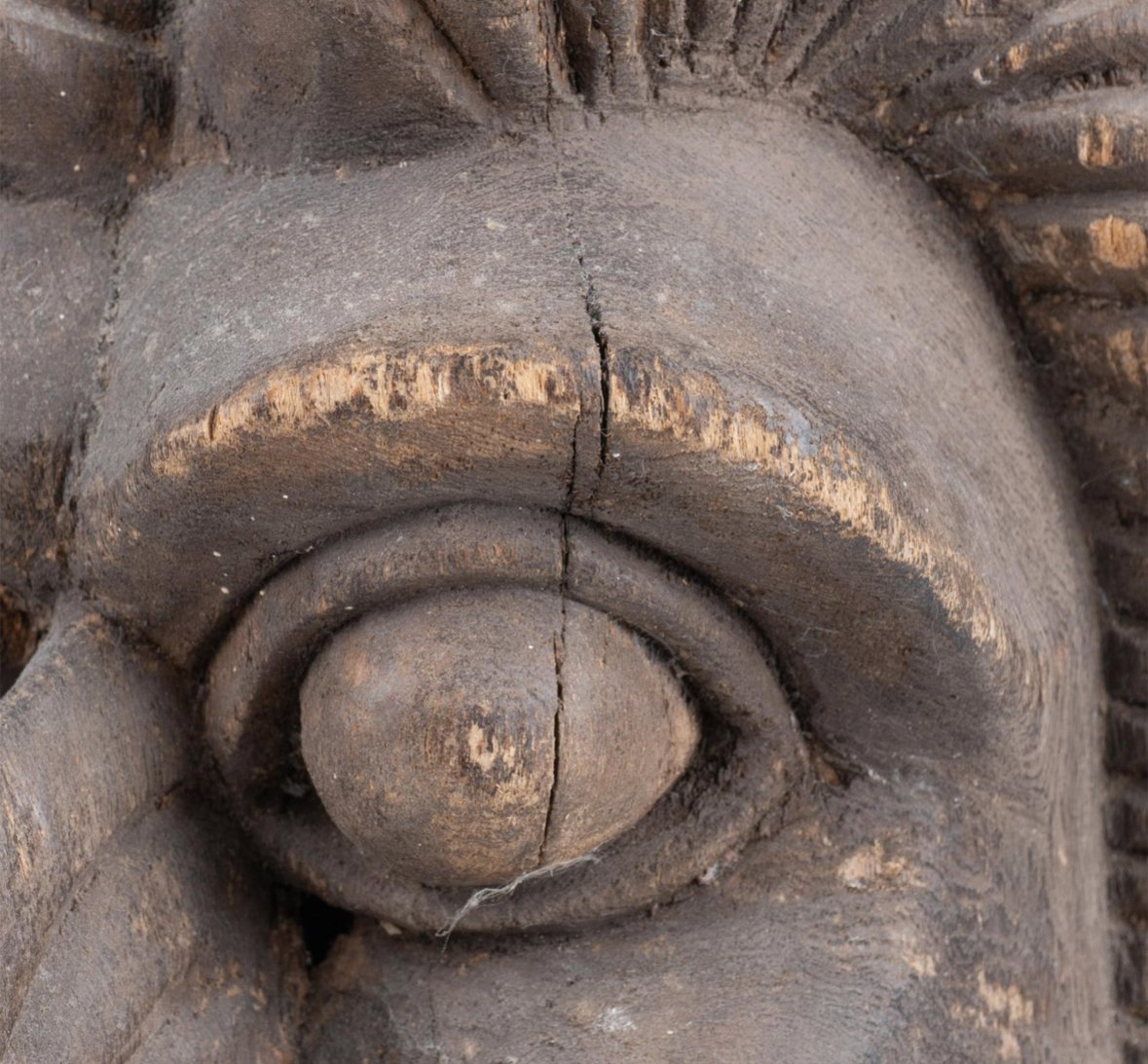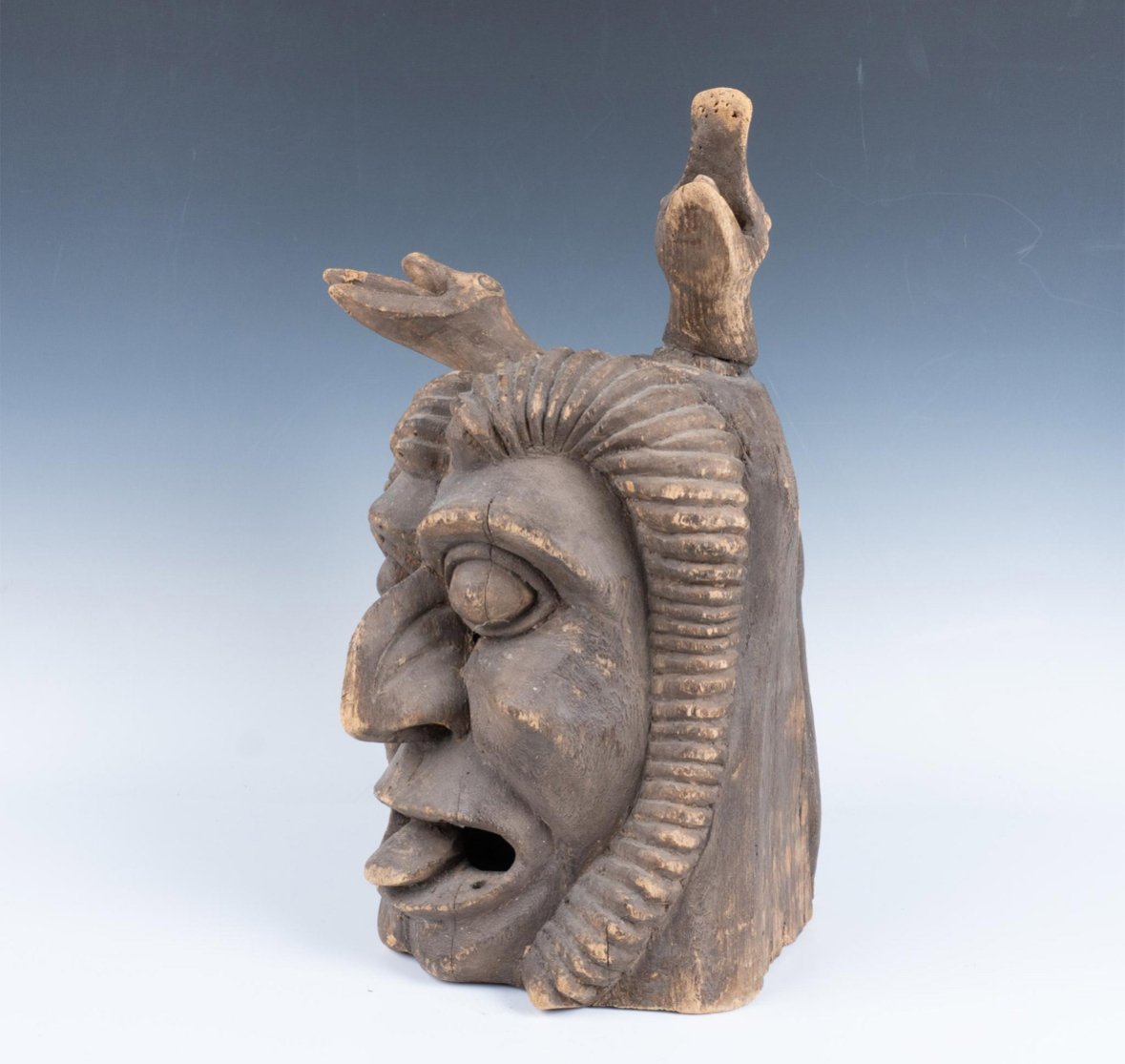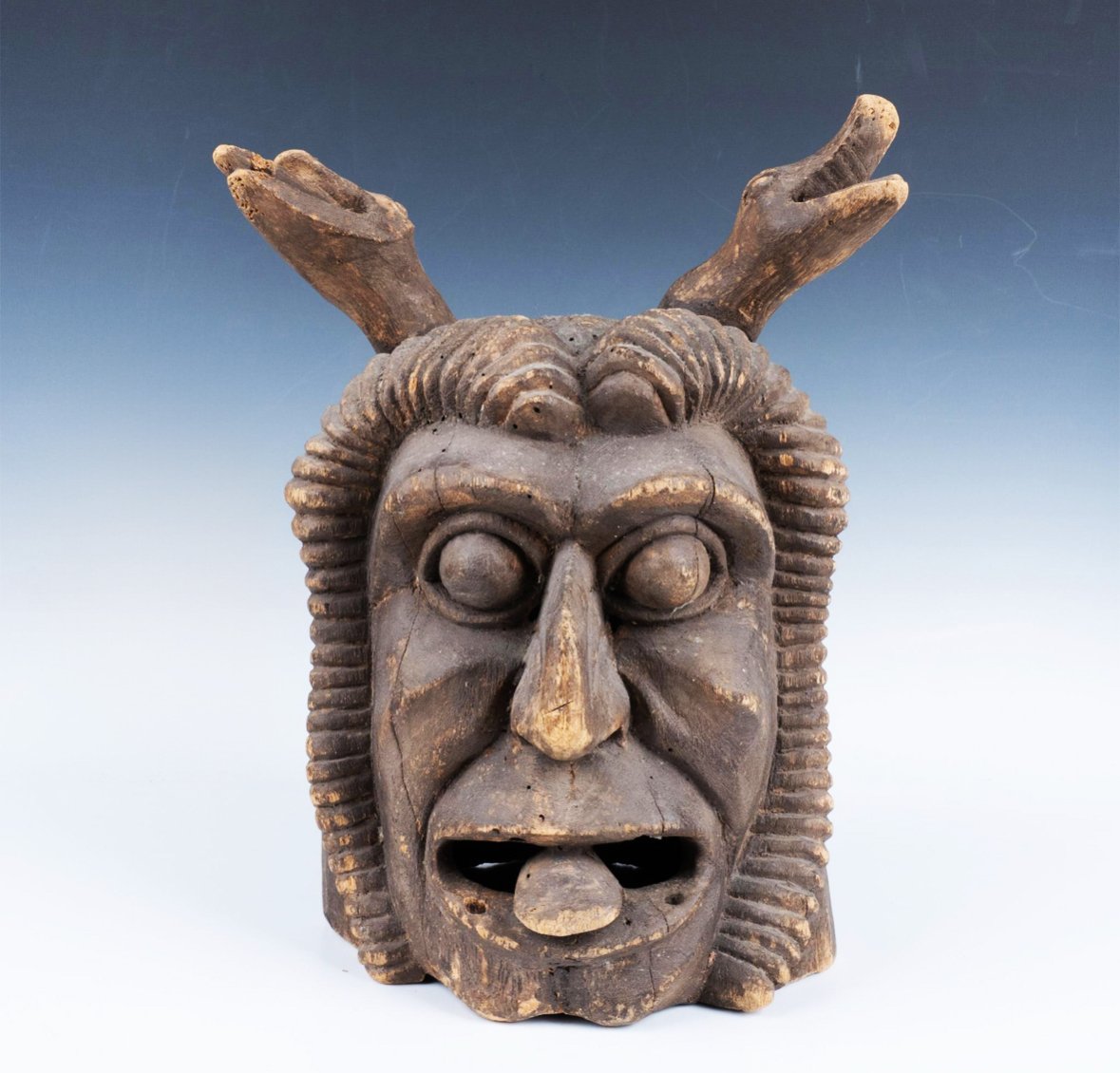


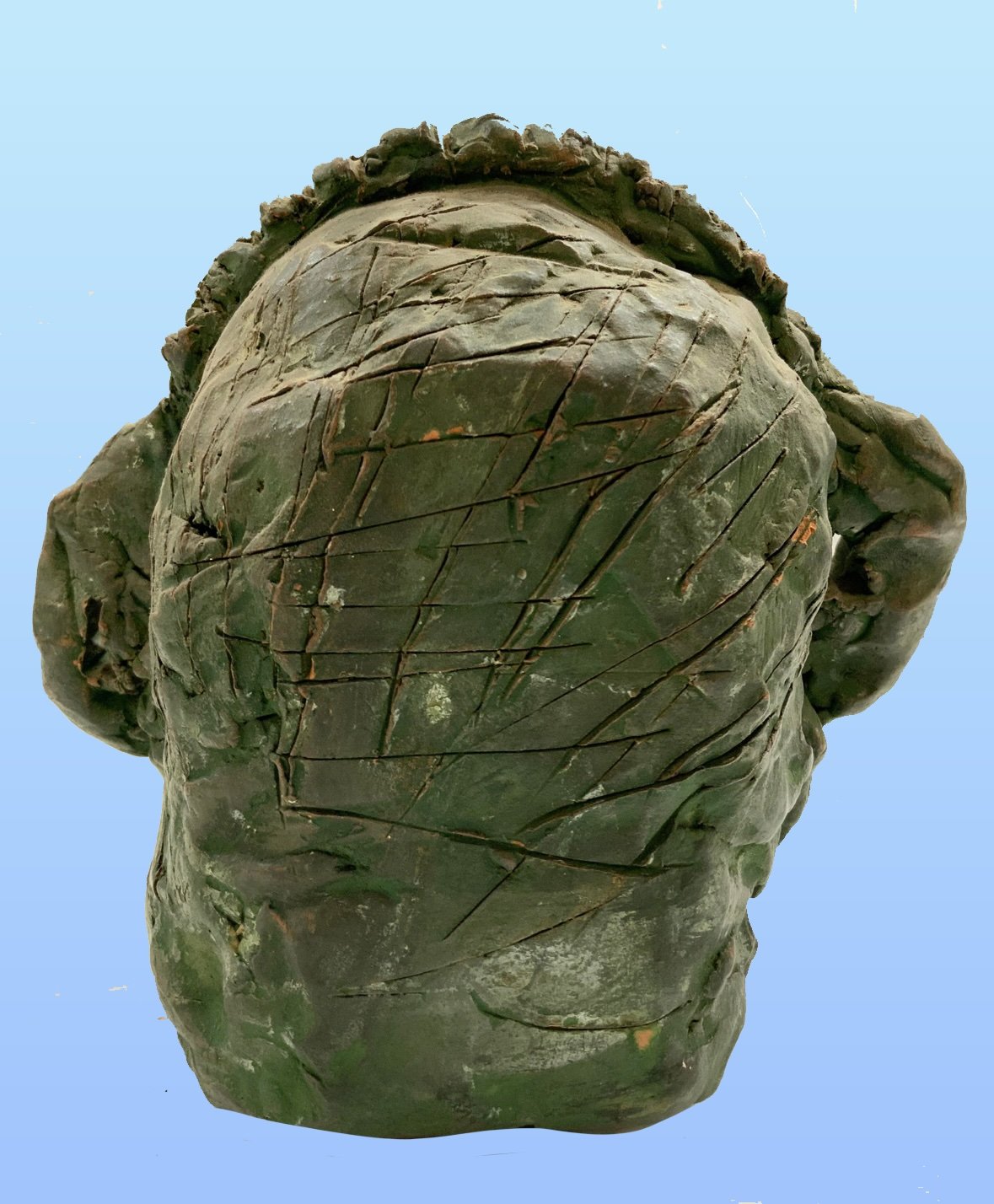



1930s clay tribal head
This primitive tribal clay head, circa 1930s, is purported to be a hand-crafted antique. Piece has a forest green toned finish, with a head measures approximately 7” tall 7.5” wide and 5.25” deep.
According to the Curio website, “The art of sculpting the human face has been practiced for millennia across various cultures, each imbuing their creations with unique stylistic elements and cultural significance. From ancient Egyptian funerary masks to Renaissance portrait busts, the human face has served as a powerful medium for artistic expressi and commemoration. These sculptures often reflect the prevailing aesthetic ideals and societal values of their time.
“Folk art, in particular, often showcases a more raw and expressive approach to sculpting, prioritizing emotional impact and personal vision over technical perfection. This piece appears to be in that vein, with its emphasis on texture and exaggerated features. The use of clay and the green patina suggest a connection earth and nature, further enhancing its folk art character.”
1930s clay tribal head
This primitive tribal clay head, circa 1930s, is purported to be a hand-crafted antique. Piece has a forest green toned finish, with a head measures approximately 7” tall 7.5” wide and 5.25” deep.
According to the Curio website, “The art of sculpting the human face has been practiced for millennia across various cultures, each imbuing their creations with unique stylistic elements and cultural significance. From ancient Egyptian funerary masks to Renaissance portrait busts, the human face has served as a powerful medium for artistic expressi and commemoration. These sculptures often reflect the prevailing aesthetic ideals and societal values of their time.
“Folk art, in particular, often showcases a more raw and expressive approach to sculpting, prioritizing emotional impact and personal vision over technical perfection. This piece appears to be in that vein, with its emphasis on texture and exaggerated features. The use of clay and the green patina suggest a connection earth and nature, further enhancing its folk art character.”



